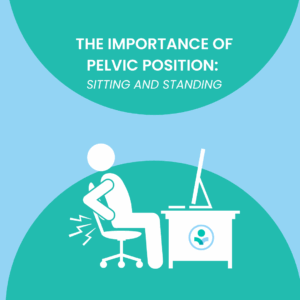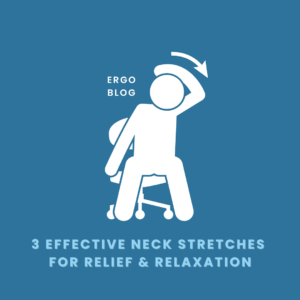Updated: Mar 14, 2023
Ergonomics & Shoveling: Snow the Tips!
Watching lightweight snowflakes slowly fall from the sky seems peaceful on a cold, winter day, especially with a warm cup of hot cocoa in hand. However, seeing the snow build up and having the thought of going outside to clear the sidewalks may not sound as peaceful. Shoveling is a great exercise when done correctly. It activates muscles for strength training and elevates our heart rate for cardio training. On other occasions, when shoveling is not done correctly, it can increase a person’s risk for injury. A Harvard study found that most people who are going out to shovel in the winter months have not exercised regularly.
Living a slightly more sedentary life and then quickly transitioning to a heavy lifting task can cause some health problems. What happens is that lifting heavy snow can make our hearts work harder than what we are used to and therefore cause heart attacks in some people. To explain this in more detail, shoveling increases blood pressure interrupts blood flow to part of the heart, and makes blood more likely to form clots.
According to the CDC, heart attack symptoms after shoveling snow can include chest pain, chest discomfort, feeling weak or faint, lightheadedness or dizziness, pain or discomfort in the arms and shoulders, shortness of breath, or tightness in the chest.
There are several ways to prevent an injury or health problem caused by shoveling. Follow the tips below.
Tips to Stay Healthy While Shoveling
Before heading outdoors
- Stay active. Maintain your healthy habits from spring, summer, and fall, and continue to stay active during the winter months. Use 30 minutes of your day to focus on exercise that elevates your heart rate. This could be strength training and/or other aerobic exercises. According to the CDC, each week adults need at least 150 minutes of moderate-intensity physical activity and 2 days of muscle strengthening activity.
- Warm up your muscles first. Before heading outdoors start by completing standing marches, jogging in place, or a brisk walk. This will help to warm up your muscular system and other systems within your body. Once you are warmed up you can add in a few gentle stretches at this point as well.
- Dress appropriately. With colder temperatures, be mindful of the first layer of clothing next to your skin. Wearing wool is ideal as it helps to wick away moisture and it keeps you warm. Wear additional layers thereafter. Wearing multiple layers makes it easier to peel away clothing to help keep your body at the just right temperature. Use gloves that allow you to grip the shovel handle securely. Be mindful of all the layers that are used from head to toe.
- Wear the proper footwear. If conditions are icy, add ice cleats to your boots if needed. Most snow boots are not designed with much support or cushion. It is okay to add custom orthotics to snow boots or other insoles that fit your feet.
Choosing equipment
- Use a lightweight shovel. Snow plus a shovel can be quite a bit of weight to lift. A lightweight shovel can decrease the overall amount of weight you are having to lift and push.
- Handle at chest height. This is the height to check when the handle is in the most vertical position and not the working position. To maintain an upright posture, it is ideal for the shovel handle to be at chest height. If your handle is shorter than this, it will likely cause unwanted forwarding bending.
- Consider the snowblade. When lifting snow, use a smaller blade to decrease the amount of weight repeatedly lifted. A different blade would be used to push snow. A wider blade will get the job done most efficiently if the handle is positioned around elbow height.
- Use an additional handle for better posture. Adding a secondary handle to your shovel can help to improve your posture and decrease forward bending. When using an additional handle, avoid throwing snow onto tall snow piles since this can create an awkward posture with increased back extension.
Outside and ready to shovel
- Keep your arms in your comfort zone. When you are pushing snow, be mindful of your posture. Avoid reaching too far with a forward bent posture. This puts additional stress on your muscular system since it is not in a neutral position. Your upper arms should be close to your body with your upper body upright.
- Avoid large snow piles. Large snow piles can make it more difficult since additional lifting and throwing of snow can occur. Keep snow piles less than 4 feet tall and limit throws to 3 feet or less.
- Take breaks. Stop shoveling from time to time, preferably every 15 minutes. Shoveling is not an activity that can be completed continuously. Rest breaks are necessary. This is a time to drink water, walk around and enjoy the beautiful scenery. Stop shoveling at any point in time if you start to have shortness of breath, difficulty breathing, pain, nausea, or excessive sweating.
- Stretch. Technically, stretching could also be considered rest time. At least every 30-60 minutes, incorporate stretches into your shovel routine.
Practice good lifting techniques.
- Once you are ready to lift and move the snow with your shovel, keep your feet shoulder-width apart. Most weight should be on the front foot and close to the shovel.
- Bend your knees.
- Keep your back straight.
- Position the shovel handle close to your body. When your arms are outstretched and the handle is away from your body, this creates additional weight and force for your muscles to handle.
- Breathe. Holding your breath during the shoveling process can cause additional muscle strain. When you are preparing to lift, breathe in. When you are throwing snow breathe out.
- Engage and tighten your stomach muscles. This will help your body work the most efficiently with a strong core.
- Avoid twisting at all times. Use your feet to change directions and turn in the area where you want to focus on.
Shoveling can be quite a physically demanding task. Pay attention to the cues from your body and respond appropriately. It is completely okay to take a break more frequently than every 15 minutes if this is what your body needs.



